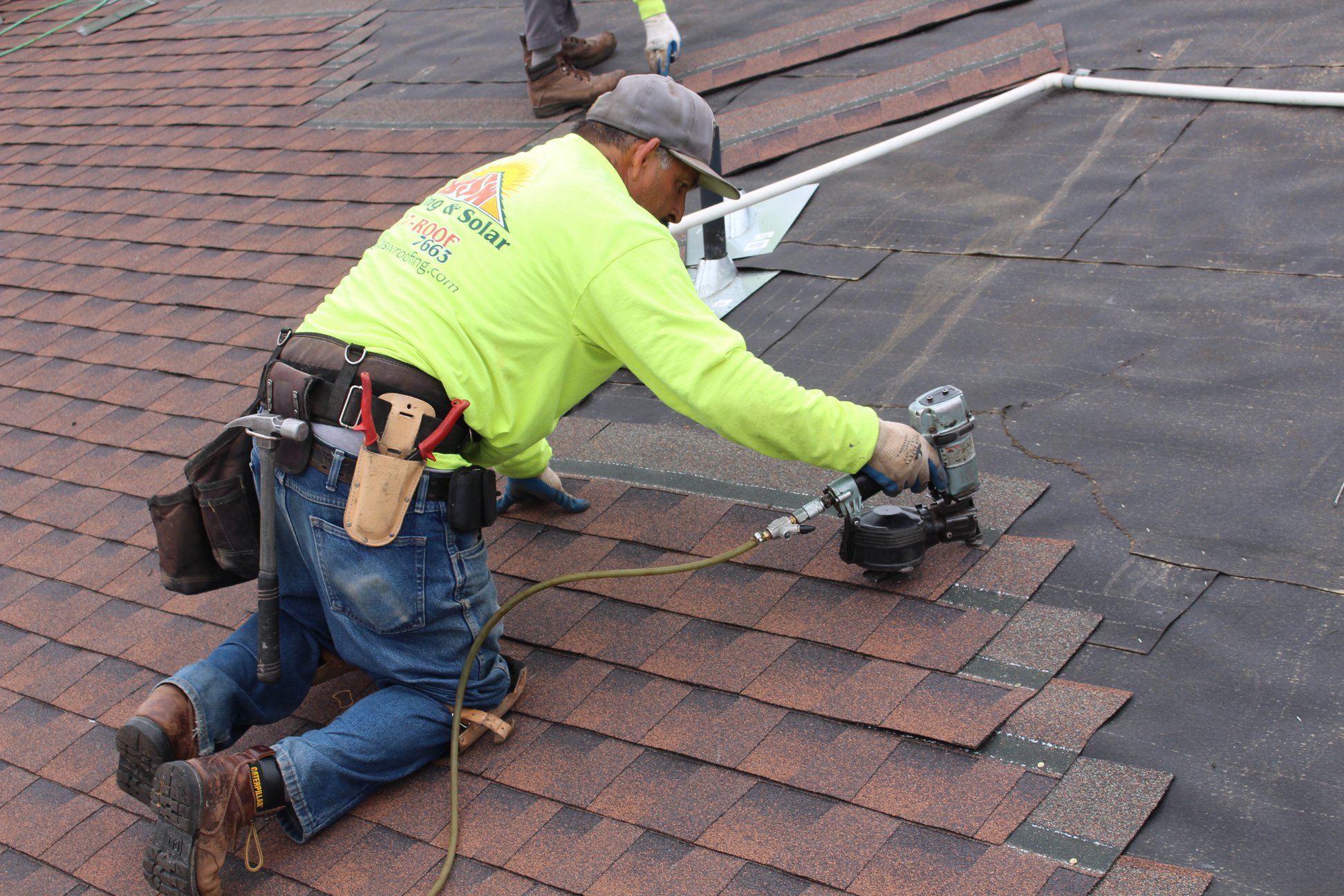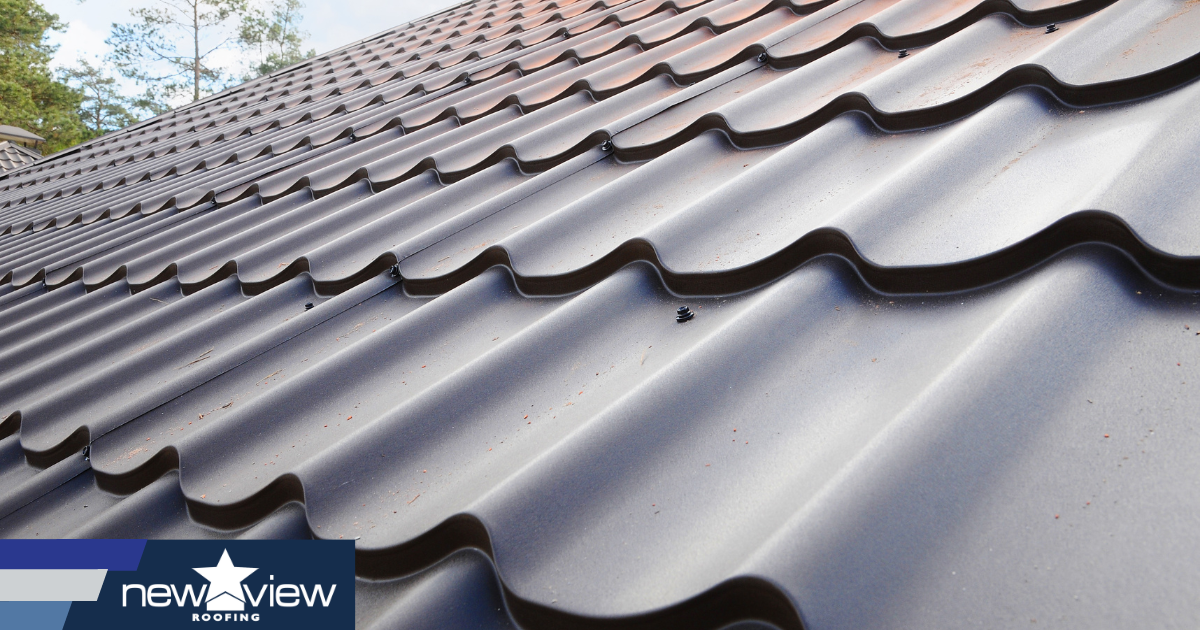Just How Gainesville Roofing Companies Can Change Your Home's Outside
Just How Gainesville Roofing Companies Can Change Your Home's Outside
Blog Article
Best Practices for Ensuring Appropriate Roof Ventilation
A balanced consumption and exhaust air vent proportion, commonly 1:300, plays an essential role, with intake vents preferably placed at the reduced edge of the roofing for trendy air access and exhaust vents at the peak for warm air exit. Keeping insulation away from vents is important to prevent air flow limitation.
Understand Air Flow Basics
Effectively comprehending air flow fundamentals is vital for guaranteeing the durability and efficiency of roof. Reliable air flow reduces moisture accumulation and temperature level extremes in the attic room, both of which can result in significant structural damages gradually. A well-ventilated roofing assists in preventing common problems such as mold development, wood rot, and ice dams, which can jeopardize the stability of the roof covering products and the underlying frameworks.
The main goal of air flow is to promote the activity of air, permitting a consistent exchange between the indoor and exterior settings. This balance is accomplished with a combination of intake and exhaust vents that collaborate to maintain optimum air flow. Intake vents, typically located along the eaves or soffits, permit fresh air to go into the attic space, while exhaust vents, often positioned at or near the roof covering ridge, make it possible for warm, humid air to escape.
Trick variables affecting the efficiency of roof air flow include appropriate positioning, ample sizing, and ensuring that both consumption and exhaust vents are unblocked. Regular inspection and maintenance are critical to recognize possible clogs, damages, or ineffectiveness in the air flow system, thereby guarding the roof covering's performance and longevity.
Kinds Of Roofing Vents
Roof covering vents play an essential role in keeping reliable attic ventilation and, by extension, the general health and wellness of the roof covering system. Numerous types of roof covering vents are readily available, each with one-of-a-kind advantages tailored to particular roof demands. Ridge vents, for instance, are installed along the roofing system's top, allowing warm, humid air to get away from the attic room. They supply continual ventilation and mix flawlessly with the roofline, making them both efficient and visually pleasing.

Soffit vents are set up under the eaves and operate in tandem with roofing system vents to ensure a well balanced consumption and exhaust system. By permitting cooler air to enter from below, soffit vents facilitate the expulsion of warm air through top vents. Gable vents, located on the exterior walls of the attic room, offer an additional efficient remedy, especially in homes with saddleback roofs.
Examine Your Present Air Flow

Following, take into consideration the age and problem of your roof products and ventilation components. Older systems might not follow existing building ordinance or may have deteriorated in time, decreasing their effectiveness. Conduct a thorough exam to identify any kind of signs of deterioration, such as corrosion, damage, or voids that might endanger the system's efficiency.
Additionally, measure the attic temperature and humidity levels. High temperatures and humidity can show insufficient air flow.
Installment Best Practices
Effective setup of roof covering air flow systems is extremely important for making certain optimum performance and durability. Correct installation begins with comprehending the particular air flow demands of the structure and the roof covering it browse around this web-site covers. This involves determining the right proportion of consumption to wear down vents, generally sticking to the 1:300 policy, which specifies one square foot of ventilation for every single 300 square feet of attic room flooring room.

The placement of vents is just as vital. Consumption vents must be installed at the roof covering's reduced side, frequently in the soffits, to permit great air to enter. Exhaust vents, on the various other hand, ought to be mounted near or at the roofing system's optimal to assist in the exit of warm, wet air. This produces an all-natural airflow that aids preserve temperature level and dampness balance within the attic room.
Seal all air vent links meticulously to stop air leakages and potential water seepage. Usage high-quality materials and comply with maker guidelines to guarantee durability and effectiveness. In addition, integrating ridge vents with baffles can considerably improve airflow performance by avoiding wind-driven rainfall and snow from going into the attic room.
Ultimately, exact setup of roof covering ventilation systems minimizes possible issues such as mold growth, ice dams, and architectural damages, making sure the roofing's honesty and the structure's total wellness.
Normal Upkeep Tips
Uniformity in maintenance techniques is essential to guaranteeing the lasting efficiency of roof covering air flow systems. Throughout these inspections, guarantee that vents are complimentary of debris, nests, and other obstructions that can restrain air flow.
Cleansing the vents is one more crucial task. Use a soft brush or a vacuum cleaner to get rid of dust and particles from intake and exhaust vents. Beware try here not to damage the vent displays or louvers throughout the procedure. Furthermore, examine the attic room room for any type of indicators of water damage, which might endanger the integrity of the roof covering system.
Correct insulation is equally vital. Ensure that attic room insulation does not block the vents, as this can severely restrict air movement. If any kind of insulation has actually shifted or cleared up, rearrange or replace it to keep an effective barrier.
Last but not least, replace any type of harmed or missing out on elements without delay. Damaged vents, split tiles, or shabby flashing can all add to inadequate ventilation and ought to be addressed without delay. Routine upkeep ensures that the roof covering air flow system functions optimally, therefore prolonging the life expectancy of the roof covering itself.
Verdict
Ensuring appropriate roof covering ventilation is paramount for keeping the effectiveness and toughness of a roofing system. Adherence to the 1:300 consumption and exhaust air vent ratio, paired with the strategic positioning of vents, is necessary. Routine semiannual evaluations, debris cleansing, and making sure insulation does not obstruct airflow are vital methods. Carrying out these finest techniques will promote a well-ventilated roofing system, therefore mitigating prospective concerns connected to moisture accumulation and extreme warm, ultimately extending the roofing's life-span.
A well balanced intake and exhaust air vent proportion, typically 1:300, plays a crucial role, with intake vents preferably put at the reduced edge of the roof for awesome air access and exhaust vents at the peak for warm air exit. Consumption vents, typically located along the eaves or soffits, allow fresh air to go into the attic room space, while exhaust vents, typically situated at or near the roof covering ridge, enable hot, damp air to escape.
Soffit vents are mounted under the learn the facts here now eaves and work in tandem with roofing system vents to make certain a balanced consumption and exhaust system. By allowing cooler air to enter from below, soffit vents assist in the expulsion of warm air with top vents. Adherence to the 1:300 consumption and exhaust air vent proportion, combined with the strategic placement of vents, is vital.
Report this page